Resource Utilization
Resource Utilization within the Organization
The Company has established a performance indicator to measure operational efficiency or greenhouse gas emission intensity, calculated as the amount of carbon dioxide equivalent emitted per million baht of outstanding loans (tCO₂e/million THB). The Company has set a target to reduce the intensity by more than 10%, equivalent to approximately 4,073 tCO₂e, compared to the previous year. This indicator has been designated as one of the key performance indicators (KPIs) of the organization, covering both short-term and long-term performance goals.
Calculation of Greenhouse Gas Emissions
The Company’s greenhouse gas emissions are calculated under the Operational Control Boundary and follow the Operational Control Method, which consolidates data from activities directly controlled by the Company. The assessment covers direct emissions from organizational activities (Scope 1) and indirect emissions from purchased electricity (Scope 2) across all operational areas nationwide.
Environmental Management
Solar power technology
The company is committed to conducting its business responsibly with respect for society and the environment. In 2024, the company initiated a solar rooftop installation project at five branch offices located in Phitsanulok and Sukhothai provinces to promote the use of clean energy and reduce reliance on non-environmentally friendly energy sources. This initiative not only helps lower long-term energy costs but also contributes to the reduction of greenhouse gas emissions, which are a major cause of global warming. The company plans to expand the installation to additional branches in the future to support the United Nations Sustainable Development Goals (SDGs) and enhance business resilience through efficient resource management. Through this project, the company successfully reduced its carbon emissions by approximately 4.19 tons of CO₂ equivalent (tonCO₂e), representing 0.10% of the company’s total carbon reduction target for 2024.
Efficient Electricity Consumption
In 2024, the company introduced measures to efficiently manage electricity consumption by setting appropriate usage limits for each branch. This initiative aims to reduce unnecessary energy use and foster a culture of resource appreciation. The savings from these measures will be reinvested into clean energy technologies and ongoing environmental management plans.
This initiative reflects the company’s strong commitment to minimizing environmental impacts and laying the foundation for sustainable development. It encourages every branch and employee at all levels to take an active role in driving energy efficiency, serving as a key catalyst for positive change within the organization and society. Through this measure, the company successfully reduced its carbon emissions by approximately 2,895 tons of CO₂ equivalent (tonCO₂e), representing 71.09% of the company’s total carbon reduction target for 2024.
Fuel Consumption Management
At present, the Company’s operations continue to rely on fuel-based energy, which remains unavoidable. As the Company’s customer base expands each year, fuel consumption has consequently increased. However, energy usage continues to be managed with efficiency and cost-effectiveness, ensuring that all fuel-related activities are optimized to support sustainable business operations.
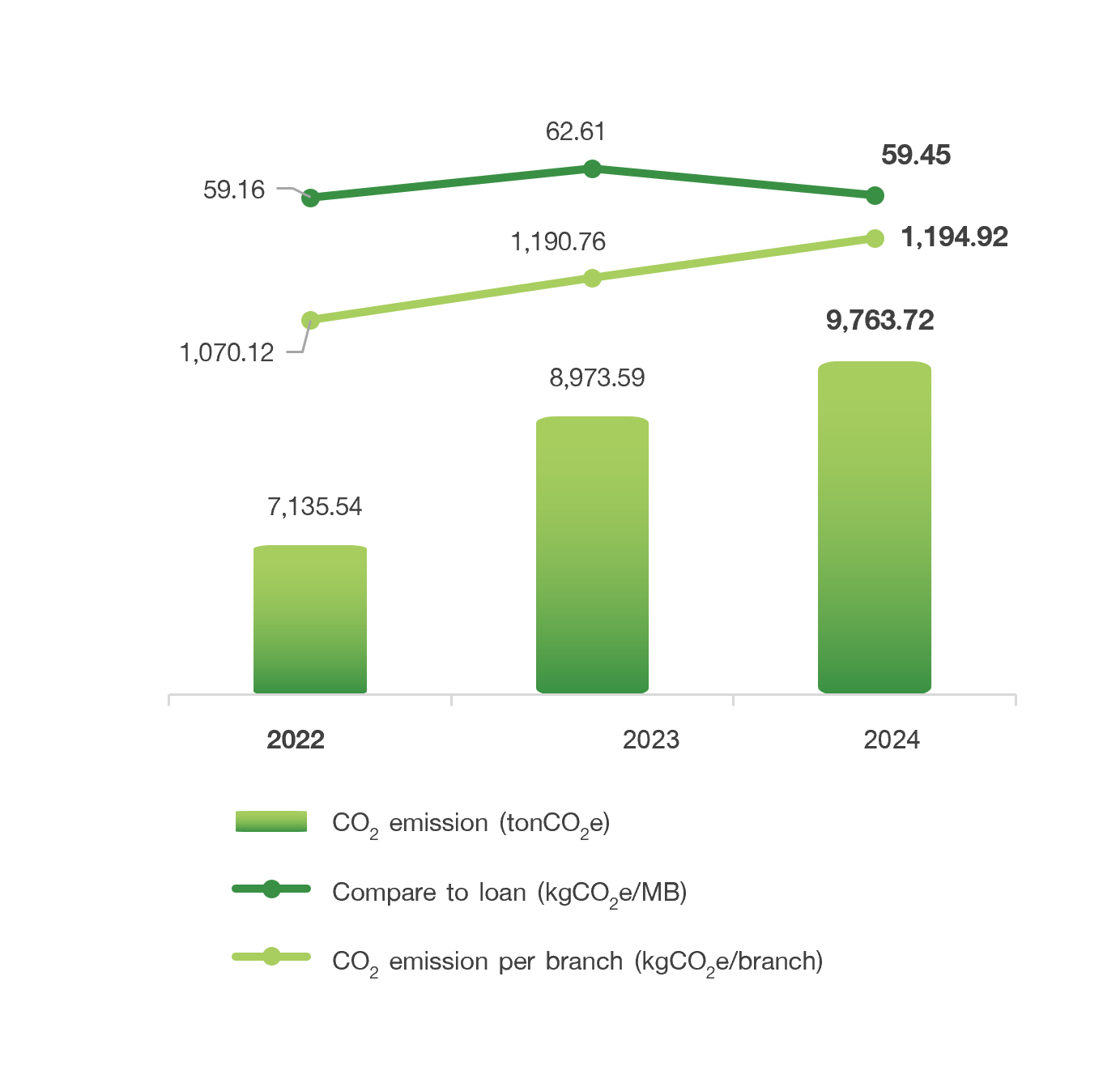
Performance Results
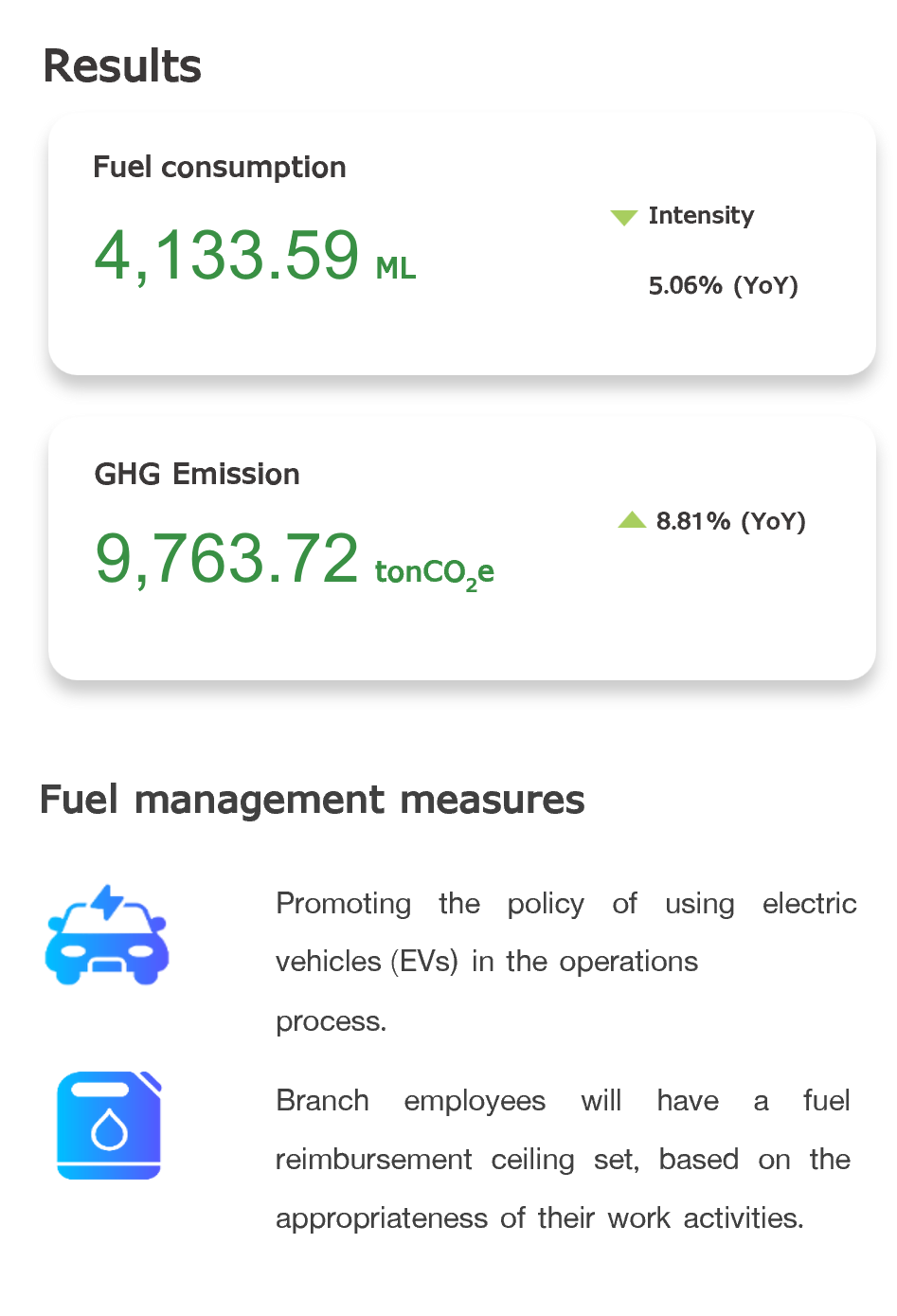
Electricity Consumption Management
Electricity is required in every stage of the Company’s operations. As branch expansion continues, energy costs and emissions have inevitably increased. In response, the Company is committed to integrating renewable energy sources into its operations in accordance with its environmental management plan, aiming to enhance energy efficiency and reduce environmental impacts.
Performance Results
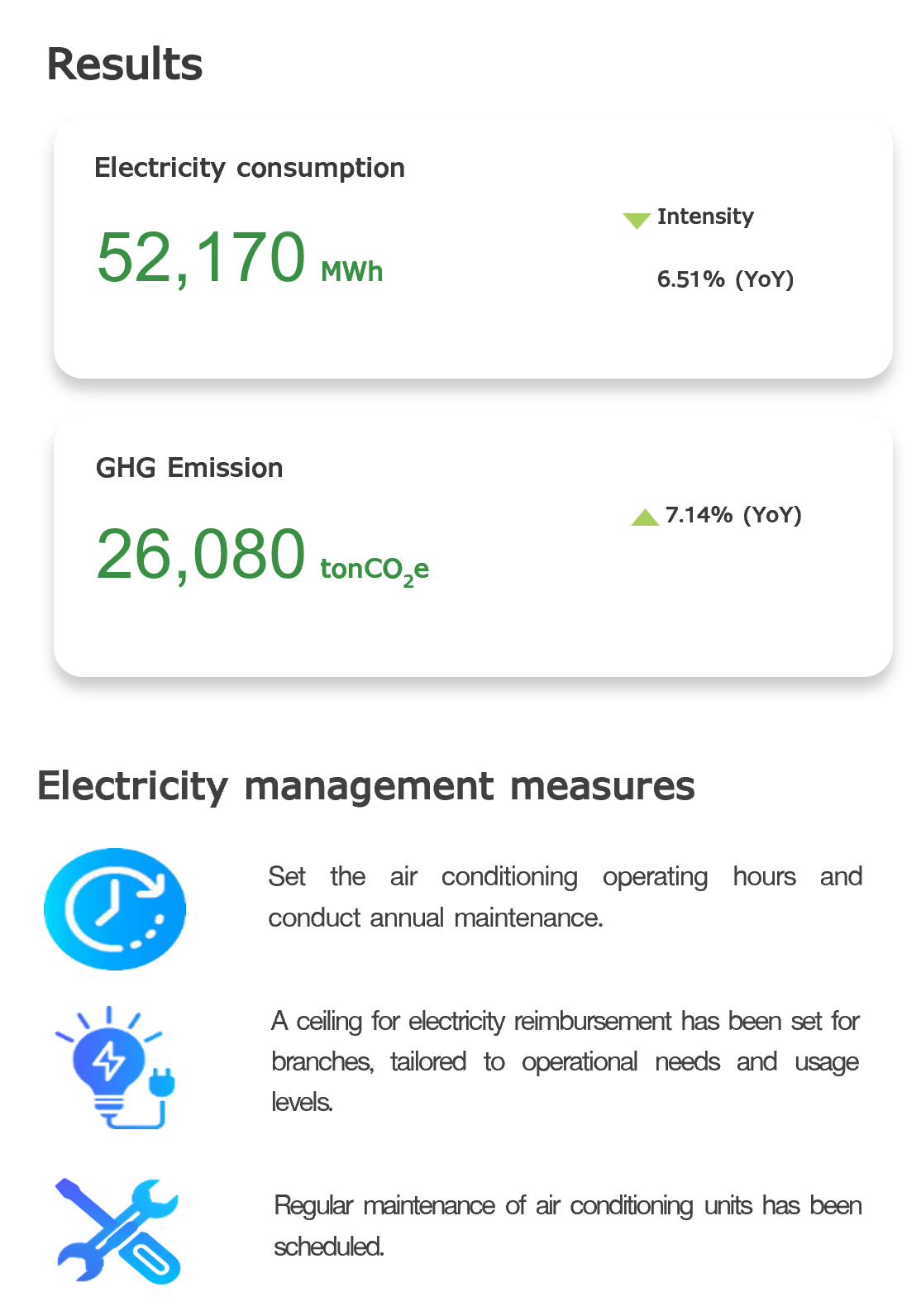
Water Consumption Management
Water is an essential resource for both life and business operations. However, challenges such as droughts, floods, and rising water demand have led to ongoing water resource crises in Thailand. The Company recognizes the importance of water conservation and promotes responsible water use through awareness campaigns and internal communication, encouraging all employees to use water efficiently and sustainably.
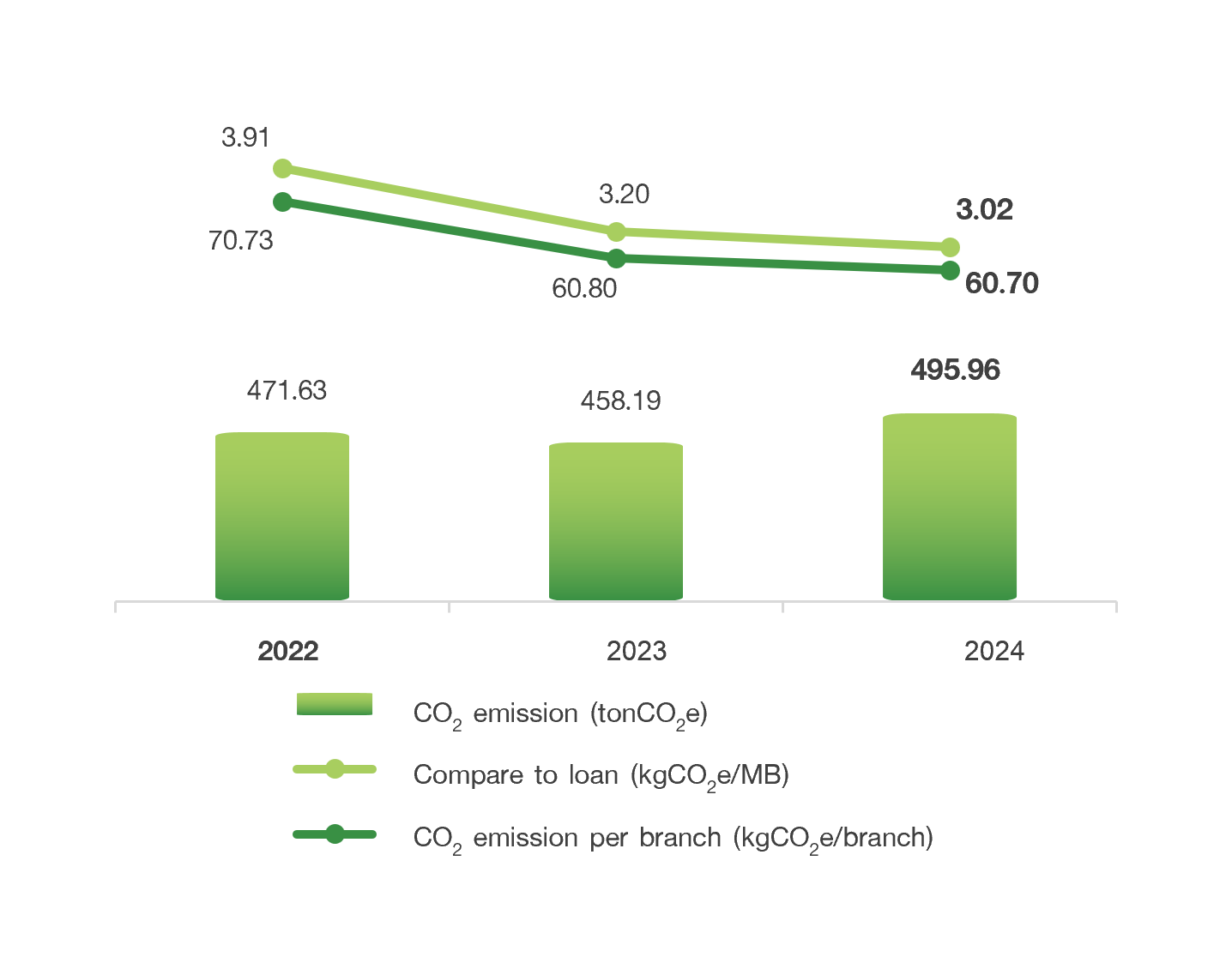
Performance Results
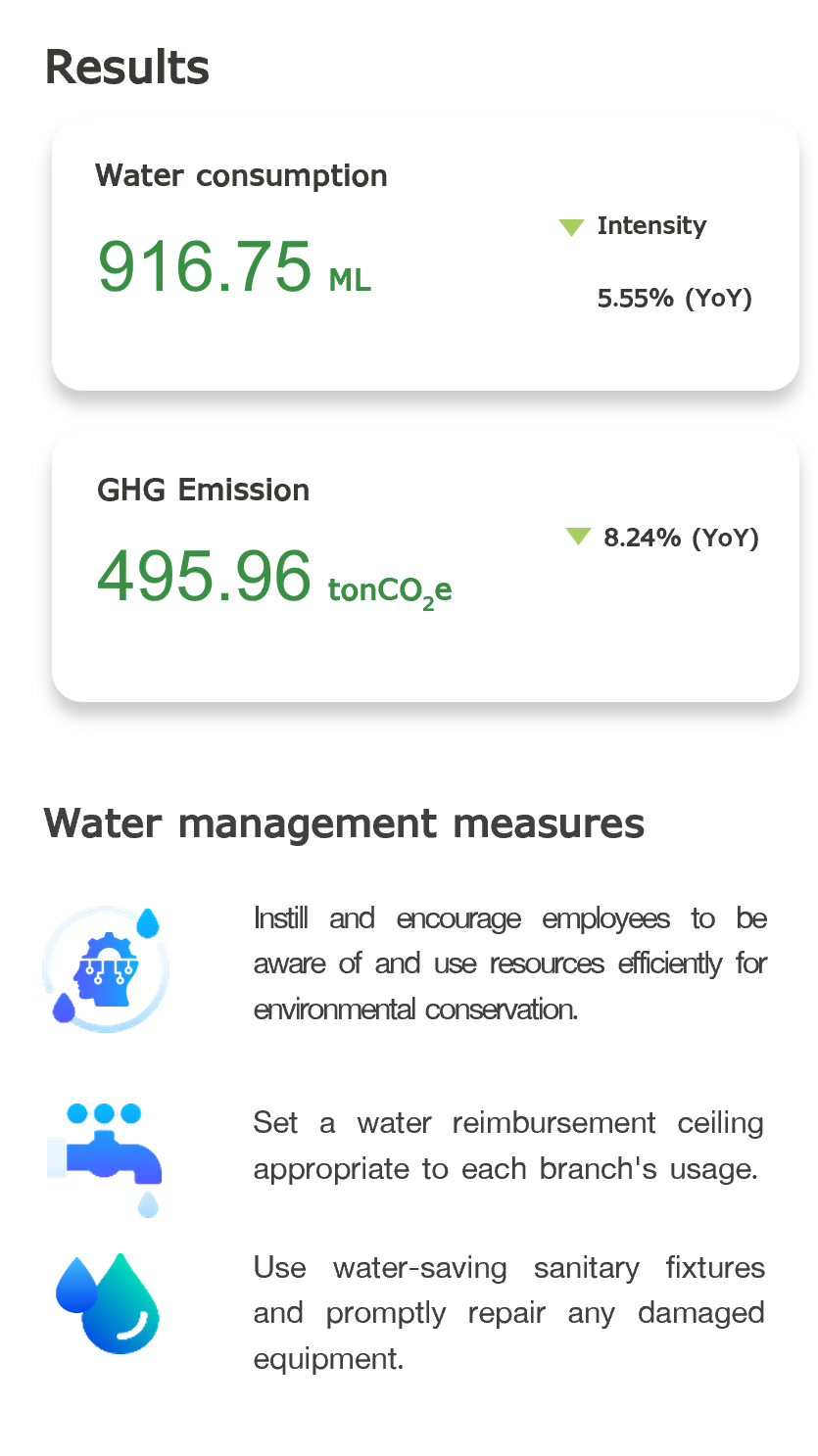
Paper Consumption Management
The Company’s operations still rely largely on paper, particularly to accommodate branch expansion and business growth of over 20%, which naturally increases paper usage. Nevertheless, the Company has implemented measures to reduce and control paper consumption to minimize indirect environmental impacts, such as promoting digital documentation, double-sided printing, and the use of recycled paper where possible.
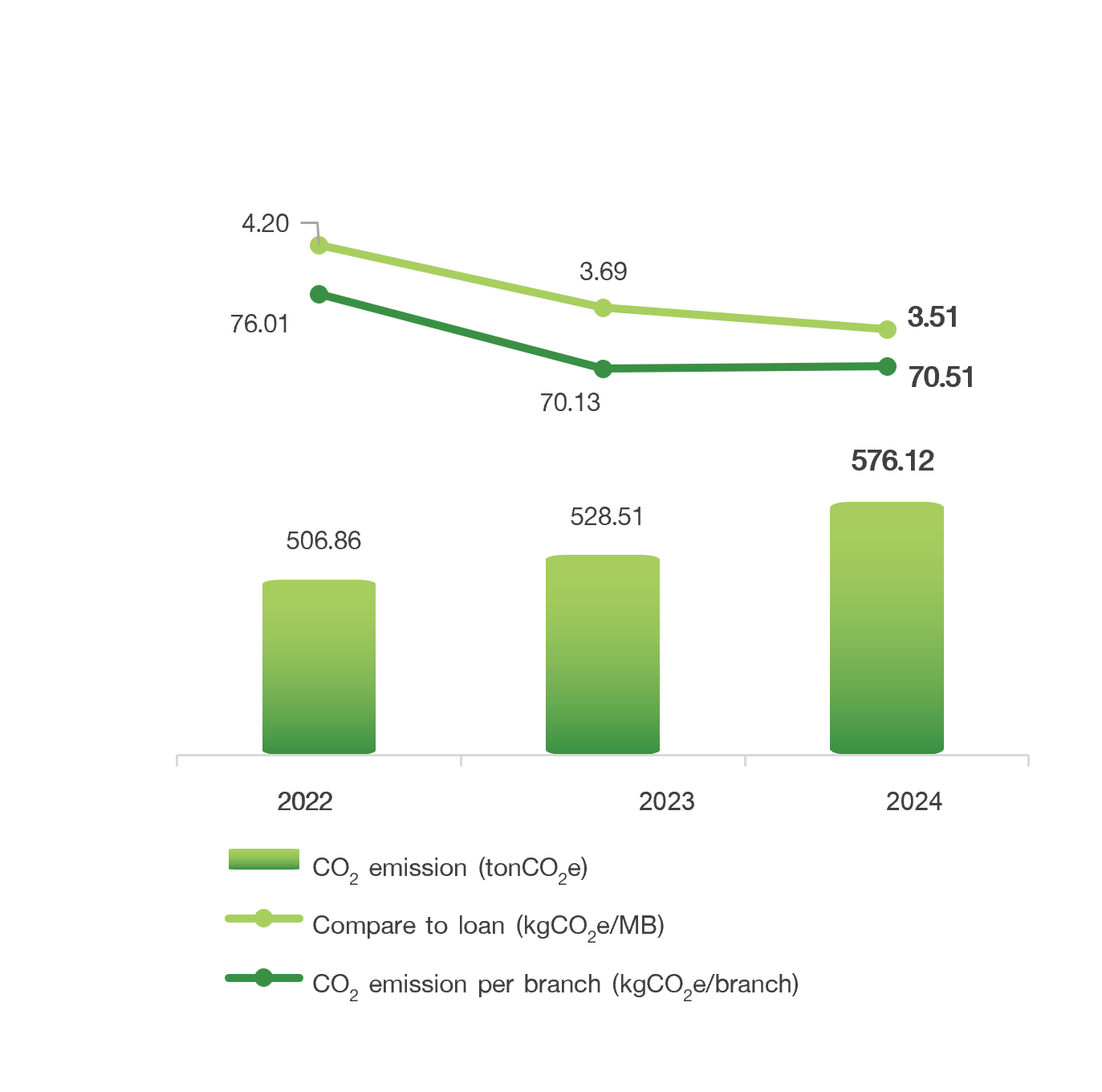
Performance Results
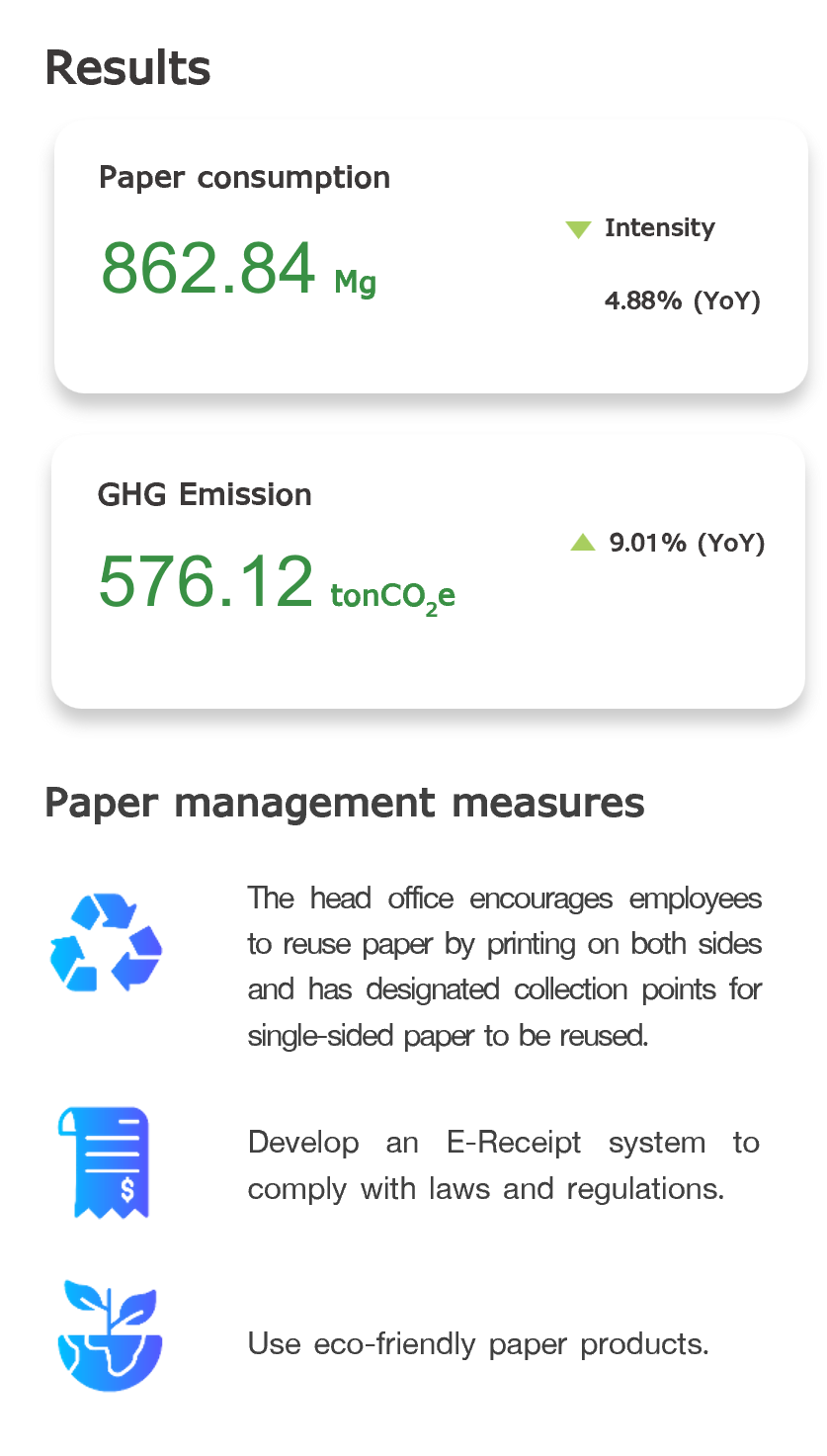
Resource Consumption and Greenhouse Gas Emissions
The continuous growth of the Company’s business through branch expansion and an increasing customer base has led to a rise in both resource consumption and greenhouse gas emissions. However, when compared to the total amount of outstanding loans, the greenhouse gas emission intensity has shown a downward trend, reflecting the Company’s ability to effectively manage resource use even with business growth exceeding 20%. The Company remains committed to enhancing resource efficiency and adopting new technologies to improve operational performance. In parallel, the Company continues to develop a more advanced environmental reporting framework to ensure transparency and accountability, aiming to minimize long-term environmental impacts.
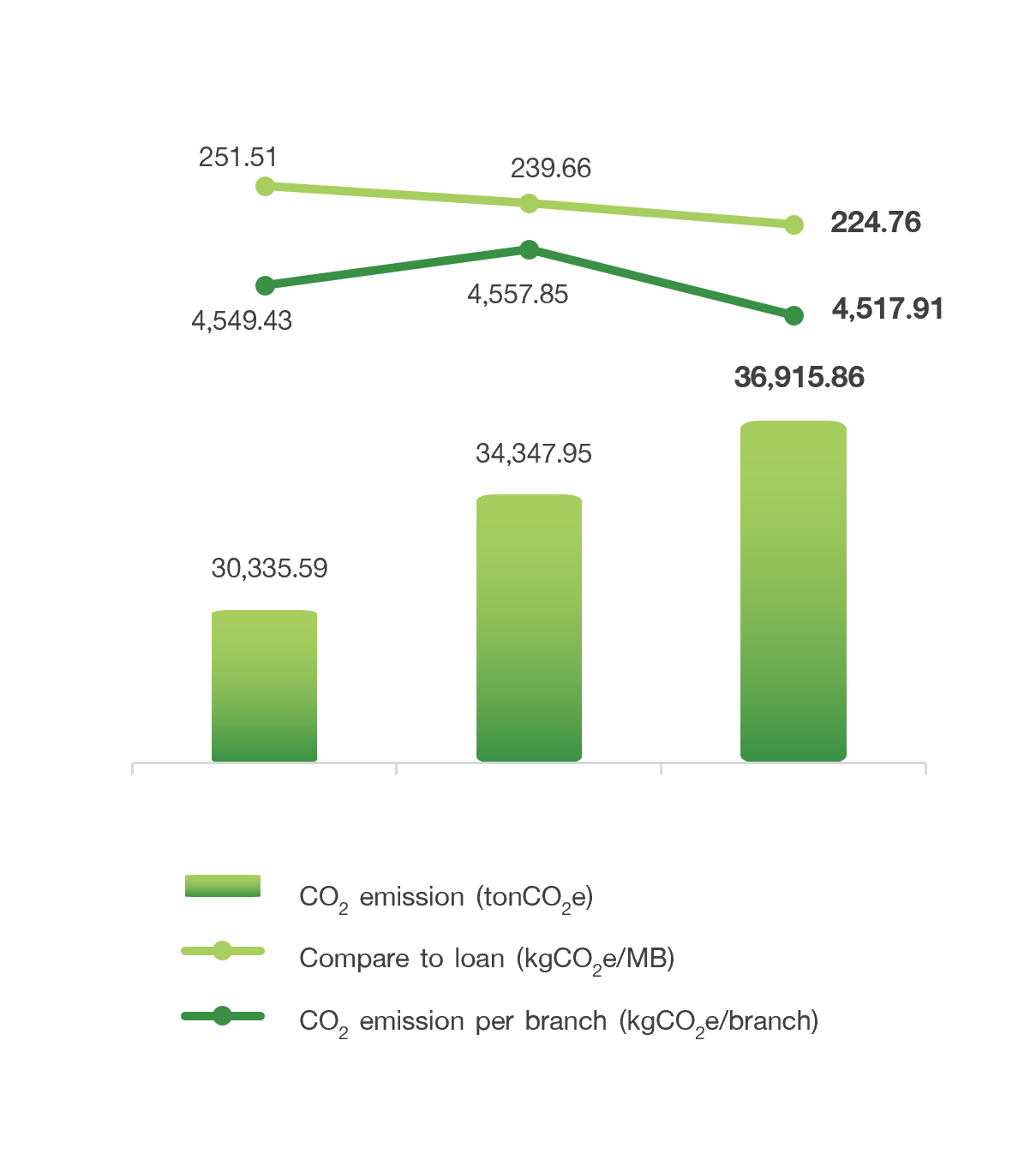
Waste Management
ost of the wastewater generated from the operations (headquarters) comes from toilets, urinals, and handwashing basins. The wastewater management involves a Combined Biological Treatment System, which is more efficient than conventional activated sludge systems. This ensures that the treated water meets the quality standards mandated by law before being discharged into public water bodies. Some of the treated wastewater is reserved for watering plants and firefighting purposes.


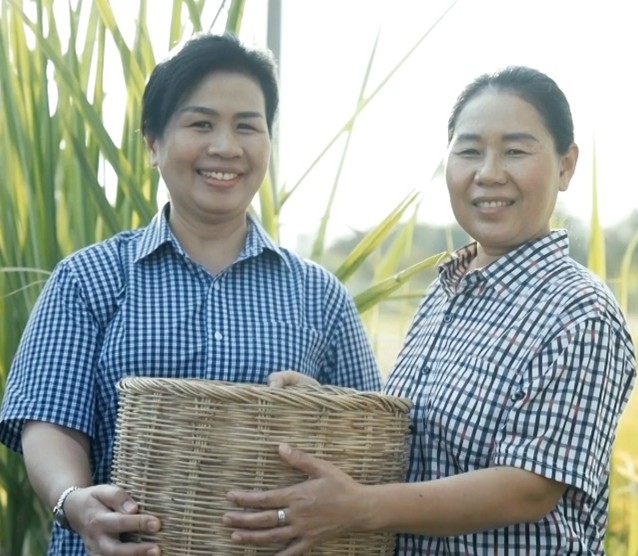
“The company sets a goal to reduce
the amount of waste from
paper/vinyl labels by 5%”
Waste is categorized and separated by bin color into general waste, recyclable waste, hazardous waste, and electronic waste (ink cartridges, damaged electronic devices that can be sold and recycled 100%). Each type of waste is appropriately managed in accordance with health regulations, and hazardous waste is handled by the organization in an environmentally friendly manner. The company aims to minimize the amount of general waste sent to landfills. The company has started using glass bottles to replace plastic water bottles in the main office as the first step. This is still in the study phase, developing a data collection, tracking, and disposal system for each type of waste. Additionally, there are plans to create value-added products from waste to generate income, enhance the organization’s image, and promote environmental awareness within the company.

In 2024, the company initiated a waste data collection system at the head office by setting up waste separation points on different floors. This initiative encourages employees to sort waste before disposal, helping reduce the amount of waste sent to landfills, create value, and promote discipline in waste management before disposal. All waste generated at the head office is non-hazardous, totaling 10,820 kilograms. The waste is categorized into two types: general waste and recyclable waste (plastic, glass, paper/cardboard, and aluminum). The company plans to introduce food waste separation bins, as regular manager meetings and employees bringing food from home generate food scraps. These food scraps will be processed into organic fertilizer for the plants around the head office.
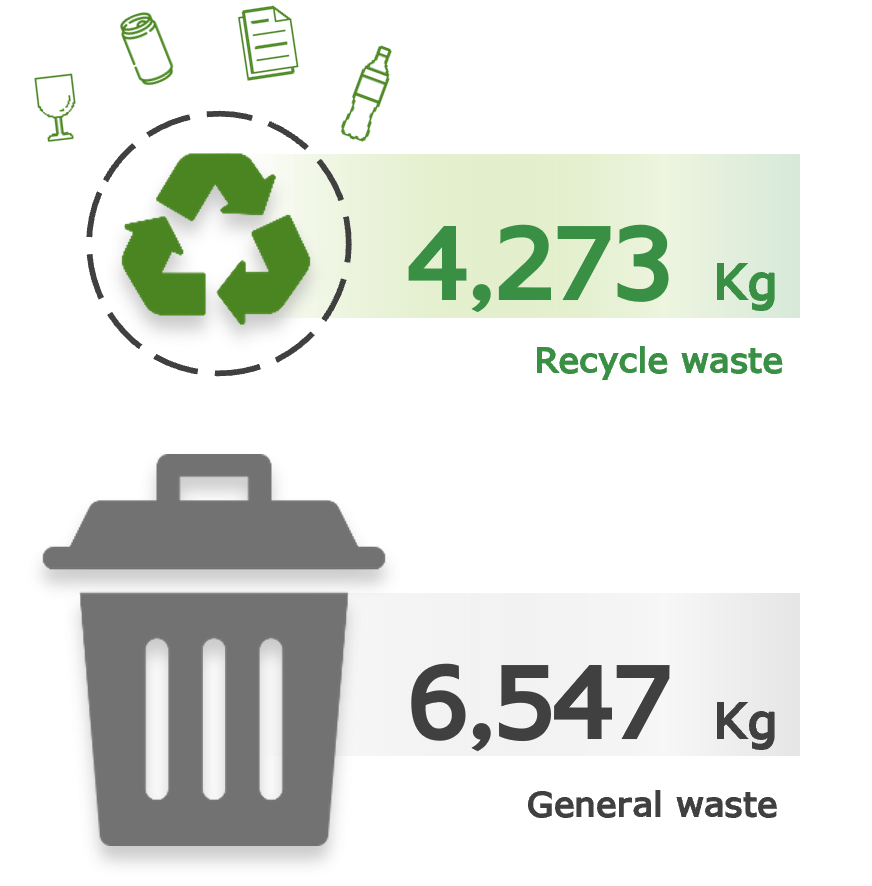
Consideration of the impact on biodiversity

In 2024, the impact on
biodiversity is
“ 0 ”
The headquarters and branches are not located in areas that are at risk of impacting biodiversity. The number of impacts on animals on the IUCN Red List is zero. The process of selecting branch locations has a policy of selecting areas that take into account areas that may pose a risk to biodiversity or impact animals listed as threatened or endangered species.
In addition to the fact that past business activities have had no impact on biodiversity, we are also looking at protecting, restoring, and developing the surrounding areas of the branch offices and the headquarters. This is done by promoting activities that promote, such as planting forests with rare plant species in those areas. The goal is to maintain abundance, enhance biodiversity, and protect ecosystems.



